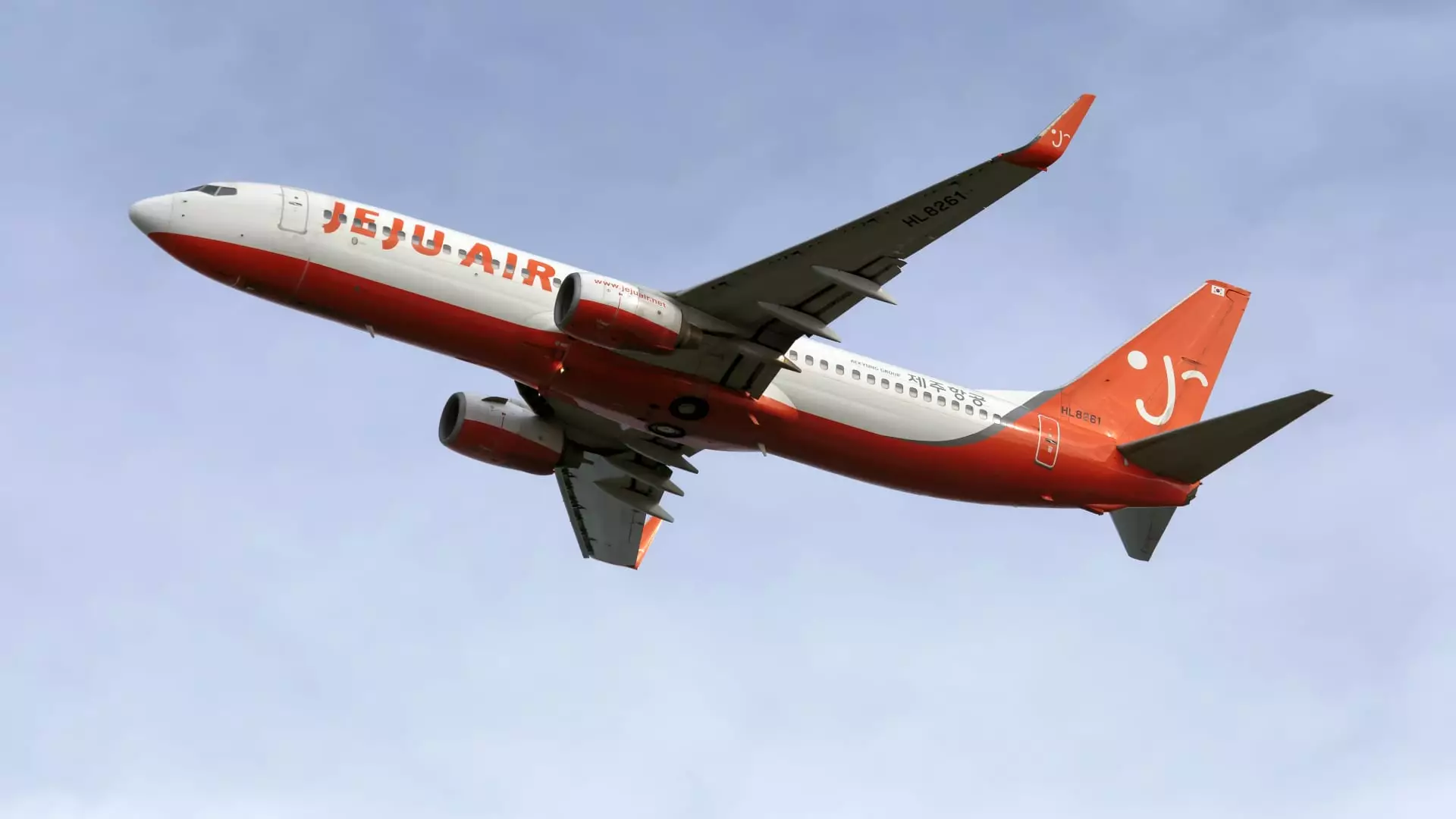On a fateful day at Muan International Airport in South Korea, the aviation community was rocked by a catastrophic incident involving Jeju Air Flight 7C2216. This disaster not only marked a tragic loss of life, claiming 179 of the 181 passengers aboard, but it also unearthed deep-seated concerns about safety protocols and aircraft reliability in the commercial aviation sector. As investigators scramble to determine the root causes of such a harrowing event, scrutiny has shifted towards the performance of the Boeing 737-800 aircraft involved, alongside the potential systemic failures that contributed to the accident.
The Boeing 737-800 has long been heralded as a reliable workhorse for airlines around the globe. With nearly 4,400 units in operational service and a strong safety reputation, its tragic involvement in this incident raises more than a few eyebrows. Interestingly, this model predates the controversial 737 Max, which found itself embroiled in scandal following two devastating crashes that revealed flaws in its flight-control systems. In many respects, the 737-800 has often been perceived as a safer option, yet the recent crash challenges any complacency surrounding its legacy.
The aircraft involved in the disaster had a particular history, having been acquired by Jeju Air in 2017 after service with Ryanair. At approximately 15 years of age, the plane was well within the operational lifespan deemed safe for such models, further complicating the investigation narrative. Experts in the aerospace field have expressed disbelief that the cause of the accident will be traced back to any inherent design flaw in this long-standing aircraft model. As noted by Richard Aboulafia, managing director at AeroDynamic Advisory, the likelihood of discovering a fundamental design issue affecting the aircraft after so many years of safe operation seems improbable.
The investigation is currently in its infancy, prompting more questions than answers about the crash’s onset, particularly regarding why the landing gear failed to deploy. Despite the potential for hydraulic malfunctions, pilots of the Boeing 737-800 possess the capacity to manually release the landing gear, meaning alternative explanations must be thoroughly examined. One emerging theory pertains to a possible bird strike, which could have incapacitated the aircraft’s engines, preventing the crew from executing necessary emergency protocols. Jeff Guzzetti, a veteran investigator, highlights the urgent nature of response in such scenarios, emphasizing that the altitude of the plane at the time could have been prohibitive in executing emergency checklists promptly.
The absence of a structured emergency response combined with the nature of the impact—directly colliding with a hard obstruction at the end of the runway—further exacerbates the tragedy. Guzzetti notes that without this critical collision, the situation could have led to a far more survivable outcome for those on board.
In the wake of this disaster, South Korea’s acting president, Choi Sang-mok, has ordered an immediate review of all Boeing 737-800 aircraft operating within the country’s aviation sector. This response showcases the profound implications the accident has had, not just on Jeju Air, but on the broader airline industry, as it ignites debates on safety oversight and operational rigor. A full investigation into the incident may take over a year, suggesting that the aviation sector must remain vigilant as the findings unfold.
As the United States National Transportation Safety Board (NTSB) steps in to lead the investigation alongside representatives from Boeing and the Federal Aviation Administration (FAA), it remains crucial for the international community to understand the underlying factors contributing to this disaster. Lessons learned from this tragedy will undoubtedly influence future policies and safety regulations, reinforcing the imperative of diligent oversight within an industry that can never afford to become complacent.
While the immediate loss faced by families and loved ones is irreplaceable, the enduring impact of this incident on aviation safety standards will resonate long into the future. The quest for answers continues, and with it, a determination to prevent such a calamity from occurring again.

